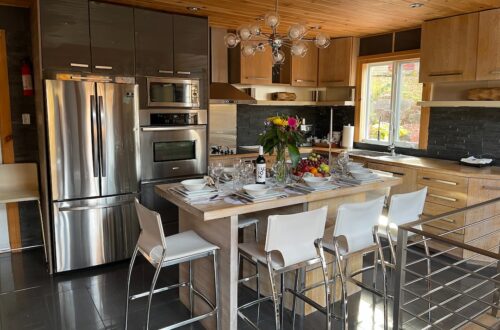In this article, we’re going to be discussing how to easily install a within your home or commercial environment, such as a bar or restaurant.
We understand that this process can be overwhelming for many, but rest assured that we’ll be providing all of the information that you’ll need to install your correctly.
Now, there are different types of that you can buy, so we’ll be addressing how to install each type separately, in different paragraphs.
So, without further ado, let’s discuss the exact steps to take to install your
Table of Contents
How to Install A Built-In
A built in , also known as an under counter , are simply units that have their vents located at the front of the chassis, usually located at the bottom.
This vent positioning means that they’re able to be installed within enclosed spaces, for as long as the front is not enclosed, without it reducing airflow to the system.
This is extremely important because airflow in and out of the is an essential factor in it maintaining a proper cooling .
Measure your before choosing a position
Therefore, when it comes to installing the , we recommend sizing up the space where you want to position your . The best way to do this is with a tape measure, so that you know to the CM how much room you’re working with.
Incorrect measurements, or estimating the area’s size will ultimately be a risk, as your may not fit in the allocated space. Additionally, even if it does fit, there may not be any space, which can cause contact/vibration issues… For example, if the unit is being installed under a counter, and it happens to be physically touching the worktop, vibrations will be transferred to the . This can subsequently cause your collection to age prematurely.
It’s also important to make sure that the position allocated for your has access to an electrical outlet Otherwise, it’ll cause an inconvenience where extension cables may be required.
Reduce vibrations by levelling your
Additionally, it’s useful to ensure that the ground where you’re positioning your is level. If not, then you’ll want to choose a that comes with levelling legs, which are essentially extendible legs. This will prevent vibrations during operation.
Use a overlay or trim.
You can conceal your more effectively with an overlay. A can easily be integrated to match your cabinets with custom panels and trim. To create a custom look for your built-in , look up the colour of your and match it with a painted or stained panel.
Place your in a cool environment
Finally, it’s crucial to make sure that your is positioned in an environment which is conducive to helping it maintain a cool, chilled .
And whilst coolers generally have and sometimes UV resistant glass, it’s highly advisable to make sure that you’re not positioning your in .
The reason for this is that UV radiation (ultraviolet light) can cause the tannins in the to break down, over a long period of time. This ultimately changes the ‘s taste, colour and diminishes the quality.
This is not something we want for our collection, so plan in advance and choose somewhere that doesn’t have . This is commonly why a is extremely popular for storing wines. However, for those who have large collections, a is a great option, alongside storing your on a (usually ).
How To Install A
Another popular kind of cooling system is the unit. In general, a will have back or side-mounted , and therefore they cannot be placed in an enclosed environment, with no space for airflow.
Know the difference between a built-in and
This is the key difference between a built-in unit, which has front-facing . However, it should be noted, that a built-in can be used in a position (i.e. out in the open), but as we mentioned, not vice versa.
Measure the designated space
Again, it’s vital that you’ve measured the area where your should go, and include approximately 20-30cm of space at the back or on each side, depending on where the air vents are located. This will give you an accurate indication as to whether a particular model will fit in the designated space.
Frequently Asked Questions
In this section, we’re going to be addressing all of the questions relating to installation that we’re frequently asked:
Can a be put in a ?
Absolutely, but it has to be a built in . The reason for this is due to their front-facing . coolers are not suitable, because ‘s are usually very small, therefore a unit’s side or back located wouldn’t be sufficient for adequate airflow.
Can a be installed under the counter?
No, as we mentioned briefly above, units have back or side-facing , which means there wouldn’t be enough room for the unit to be installed, and still have a good level of air flow.
Can you put a on carpet?
It’s not recommended to position your on a carpet. The reason being is that thick carpets can often cause unlevelled ground, which is not something you want when placing your .
fridges are more often positioned in a , , bar or restaurant (commercial setting), which have solid floors. Therefore, this is something we advise too.
Do integrated coolers need ?
Every single type of requires . Without it, they would simply overheat.
Is the process of installing a different to a single zone ?
No, the process is exactly the same. Although both and single zone units can either be or -powered, so check this and follow the above steps as outlined.
Conclusion
We hope that this article has been useful in guiding and helping answer your questions about installing a system. Feel free to leave a comment and get in touch if you’re looking to ask specific questions. We’ll then add those questions to the article’s FAQ section so we help others learn too.






